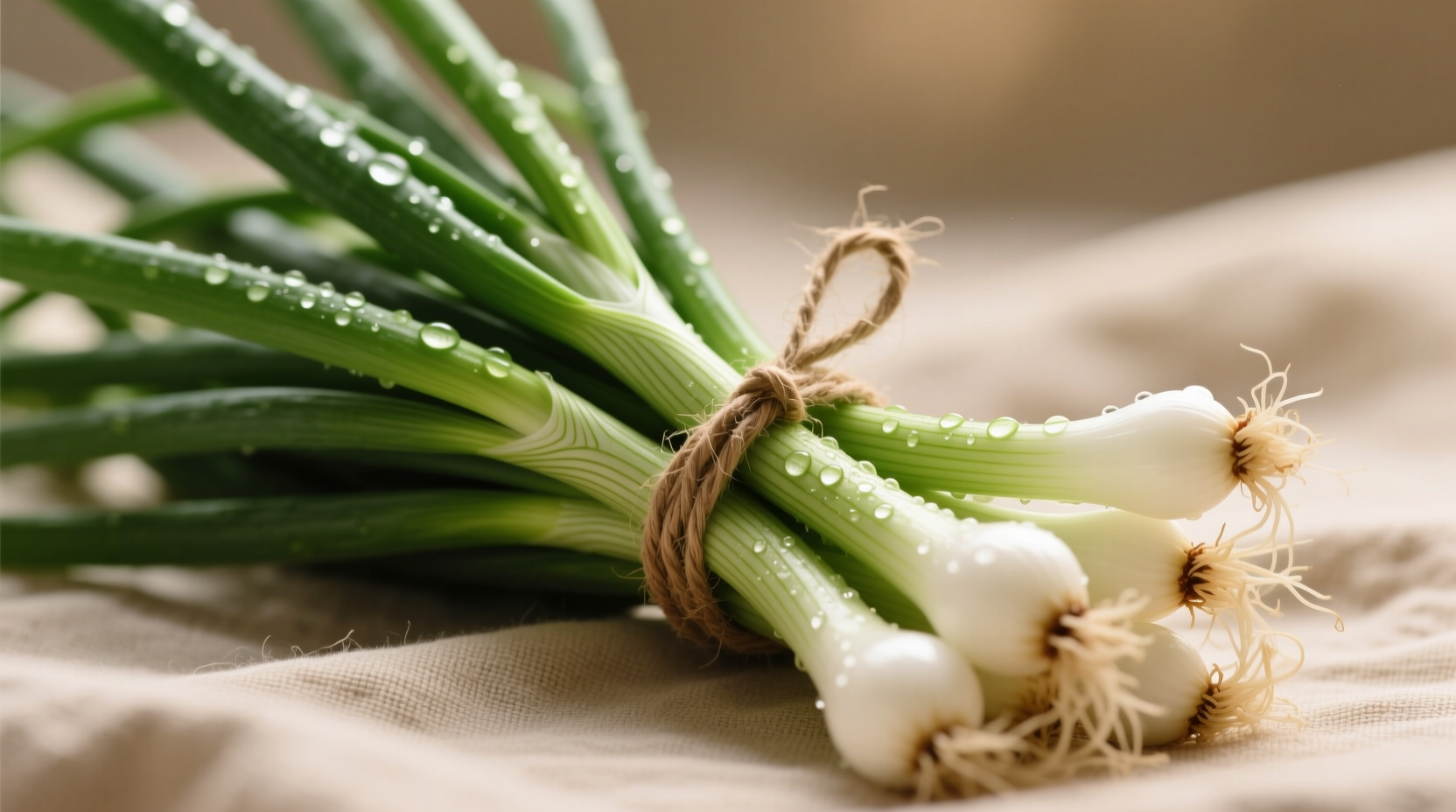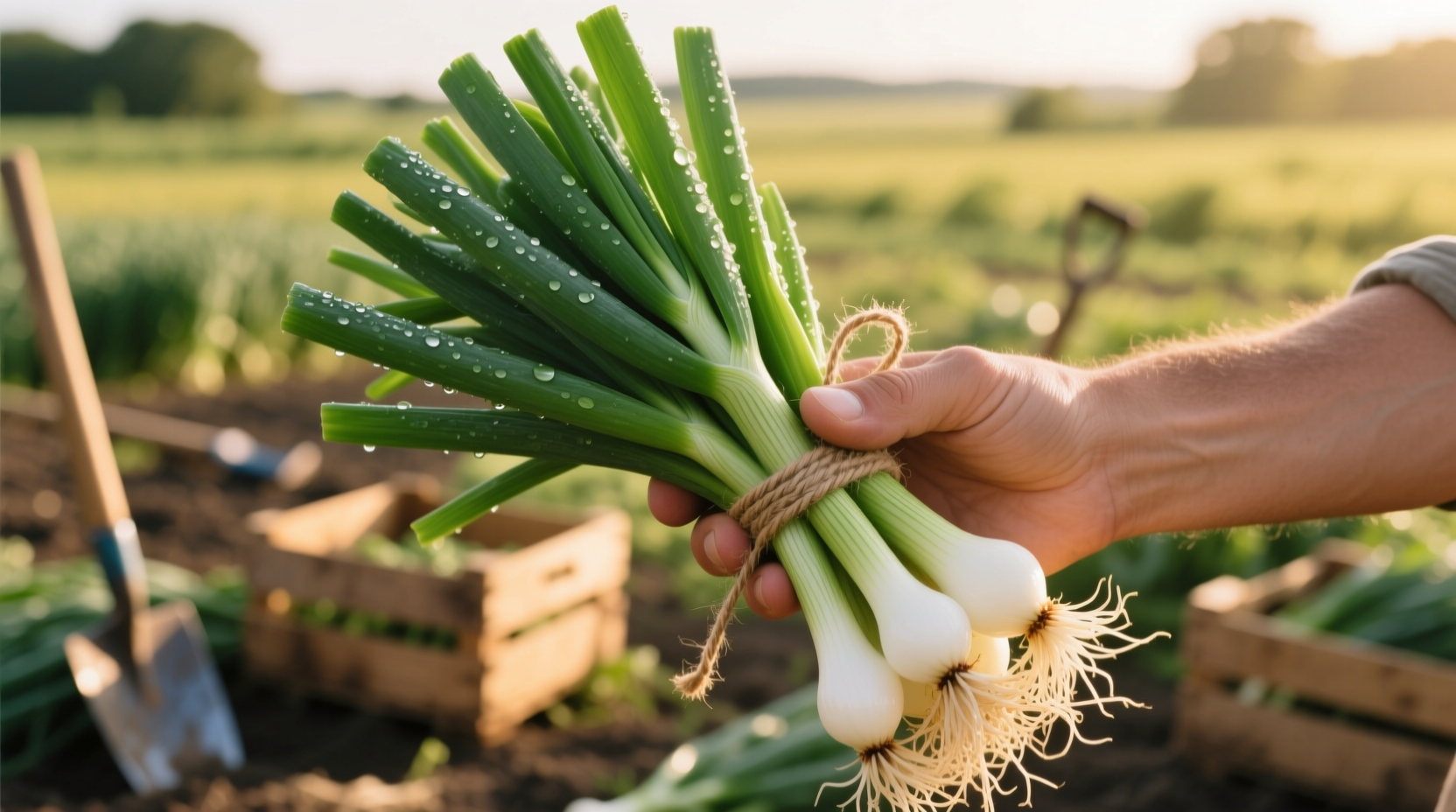What Exactly Are Bunching Onions?
When you're browsing the produce section and spot those slender green stalks bundled together, you've found bunching onions. These versatile alliums (Allium fistulosum) grow in clusters with cylindrical hollow leaves and small, underdeveloped white bulbs. Unlike their bulb-forming cousins, bunching onions never develop that large, layered onion bulb you're familiar with.
Gardeners and chefs prize them for their year-round availability and mild, sweet flavor profile. The entire plant is edible—from the crisp white base to the tender green tops—making them incredibly versatile in the kitchen. They're not just for garnishing; they bring subtle onion flavor without overwhelming heat.
| Allium Type | Flavor Profile | Best Culinary Uses | Storage Life |
|---|---|---|---|
| Bunching Onions | Mild, sweet, slightly grassy | Raw in salads, stir-fries, soups, garnishes | 7-10 days refrigerated |
| Yellow Onions | Strong, pungent when raw; sweet when cooked | Caramelizing, roasting, sautéing | 2-3 months in cool, dark place |
| Green Onions (Scallions) | Moderate sharpness, more intense than bunching | Garnishes, quick cooking applications | 5-7 days refrigerated |
| Leeks | Delicate, sweet, mild onion flavor | Soups, braises, slow cooking | 1-2 weeks refrigerated |
How to Select and Store Bunching Onions
When choosing bunching onions at your local market, look for vibrant green stalks that feel firm and crisp. Avoid any with yellowing leaves, slimy spots, or wilted appearance. The white bases should feel solid, not mushy. Unlike bulb onions that store for months, bunching onions require more careful handling.
For optimal freshness, store them wrapped in a slightly damp paper towel inside a perforated plastic bag in your refrigerator's crisper drawer. This maintains humidity while allowing airflow, extending their shelf life to 7-10 days. Never wash them before storage, as excess moisture accelerates spoilage. If you notice any sliminess developing, trim affected areas immediately.

Culinary Applications: Beyond Just Garnish
Professional chefs utilize bunching onions throughout entire dishes, not just as finishing touches. Their mild flavor makes them ideal for raw applications where stronger onions would overpower. Try them in:
- Asian cuisine: Essential in Japanese negimaki (beef rolls) and Korean pajeon (scallion pancakes)
- Salads: Thinly sliced across the grain for subtle onion flavor without harsh bite
- Stir-fries: Added in the last minute of cooking to maintain crisp texture
- Soups and stews: Provide aromatic base without dominating other flavors
- Compound butters: Blended with herbs for grilled meats and vegetables
When cooking with bunching onions, remember that the white and light green parts withstand heat better, while the dark green portions are best added at the end of cooking or used raw. This technique maximizes both flavor and texture.
Nutritional Benefits Backed by Science
According to USDA FoodData Central, bunching onions deliver significant nutritional value in a low-calorie package. A 100g serving provides:
- 27% of your daily vitamin K requirement for blood health
- 20% of vitamin C for immune support
- Good source of folate and potassium
- Contains allicin compounds with antioxidant properties
Research published in the Journal of Agricultural and Food Chemistry confirms that allium vegetables like bunching onions contain organosulfur compounds that may support cardiovascular health. Unlike stronger onions that often get cooked away, bunching onions' mild flavor encourages raw consumption, preserving more of these beneficial compounds.
Growing Your Own Bunching Onions
Gardeners appreciate bunching onions for their cold tolerance and minimal space requirements. They thrive in USDA hardiness zones 3-10 and can be harvested continuously through 'cut-and-come-again' harvesting. Plant seeds ¼ inch deep in well-draining soil with full sun exposure.
Unlike bulb onions that require specific day-length conditions, bunching onions grow reliably in most climates. They reach harvest size in 60-80 days and can be grown in containers as small as 6 inches deep. For continuous harvest, cut plants 1 inch above soil level, leaving roots intact to regenerate.
Common Substitution Questions Answered
When recipes call for bunching onions and you don't have them, understanding substitution ratios matters. Green onions make the closest substitute, but use 25% less since they're slightly stronger. For cooked applications, leeks work well but require longer cooking time. Regular onions should be used sparingly in raw applications—only the white parts in small quantities.
Remember that bunching onions' unique value lies in their delicate flavor and crisp texture. When substituting, consider whether the recipe needs onion flavor or textural element. For garnishes, nothing replicates their visual appeal and mild bite quite like the real thing.











 浙公网安备
33010002000092号
浙公网安备
33010002000092号 浙B2-20120091-4
浙B2-20120091-4